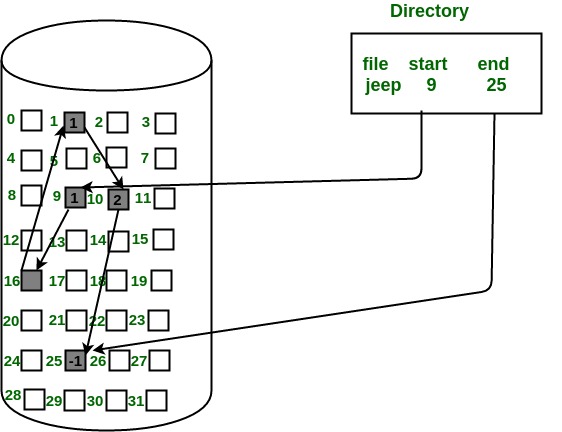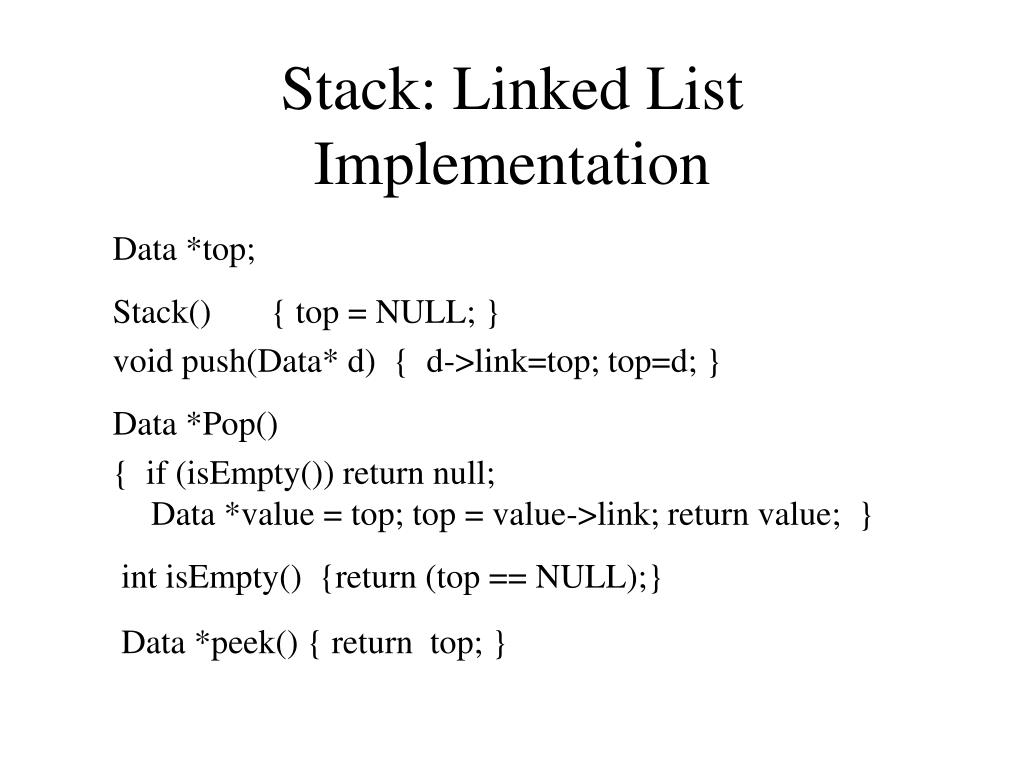
Package, or even a single class of types by itself is probably
#ADA 95 LINKED LIST STACK DISPLAY SOFTWARE#
(1992), Software Productivity Consortium (1993),Īn important part of the design process is deciding on the overall Sources exist for this detail, including Rumbaugh et al. Of classes are beyond the scope of this book. The details on designing these abstractions and the hierarchy On the objects, and the intended encapsulation for each object.

The abstractions need to include the definition of theĭesign objects, including structure and state, the operations Would include a set of meaningful abstractions and hierarchy ofĬlasses. You will find it easier to take advantage of many of the concepts You insight into some of these tradeoffs. The rationale for these guidelines is intended to give The specific choice you make in a given situation involves design " because hard and fast rules cannot apply in all situations. Guidelines in this chapter are frequently worded "consider The semantics of a class include expected behavior and exceptions.Īn object is either a constant or variable defined from a type Of a class share common properties, such as their primitive operations. Which means that if a given type is in the class, then all typesĭerived from that type are also in the class. Operations that implement the fundamental aspects of its semantics.Ī class is a set of types that is closed under derivation,
#ADA 95 LINKED LIST STACK DISPLAY MANUAL#
The basis of the value of the tag ("effectively a hiddenĭiscriminant identifying the type" ).Īs stated in the Ada Reference Manual (1995, Annex N):Ī type has an associated set of values and a set of primitive Dynamic polymorphism is provided through the use of so-calledĬlass-wide types and the distinction is then made at runtime on Time with any type from a class of types. Mechanism whereby a generic unit may be instantiated at compile Static polymorphism is provided through the generic parameter May be written in terms of the common properties. A means of factoring out theĭifferences among a collection of abstractions, such that programs Of their own and exist only to provide a set of properties for In which one or more of the parent abstractions cannot have instances Inheriting components and operations from two or more parent abstractions. Original abstraction or the existing clients. Their properties without disturbing the implementation of the New abstractions from an existing one by "inheriting" Inheritance.A means for incrementally building These are defined as follows in the Rationale (1995, §§4.1 Programming are encapsulation, inheritance, and polymorphism. The essential characteristics of object-oriented The following definitions are provided in order to make this chapter These features also give the programmer flexibility Of these features will promote programs that are easier to readĪnd modify. Some effective techniques and building blocks.

This chapter recommends ways of using Ada's object-oriented features.Īda supports inheritance and polymorphism, providing the programmer 9.2 Tagged Type Hierarchies 9.2.1 Tagged Types 9.2.2 Properties of Dispatching Operations 9.2.3 Controlled Types 9.2.4 Abstract Types 9.3 Tagged Type Operations 9.3.1 Primitive Operations and Redispatchingĩ.3.2 Class-Wide Operations 9.3.3 Constructors 9.3.4 Equality 9.3.5 Polymorphism 9.4 Managing Visibility 9.4.1 Derived Tagged Types 9.5 Multiple Inheritance 9.5.1 Multiple Inheritance Techniques 9.6 Summary


 0 kommentar(er)
0 kommentar(er)
